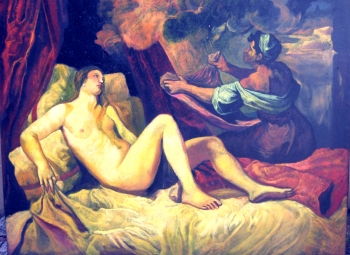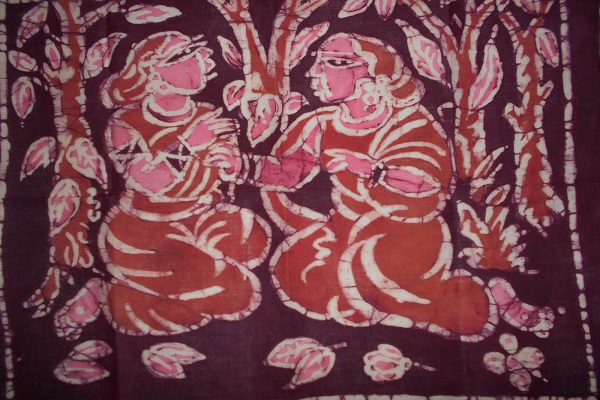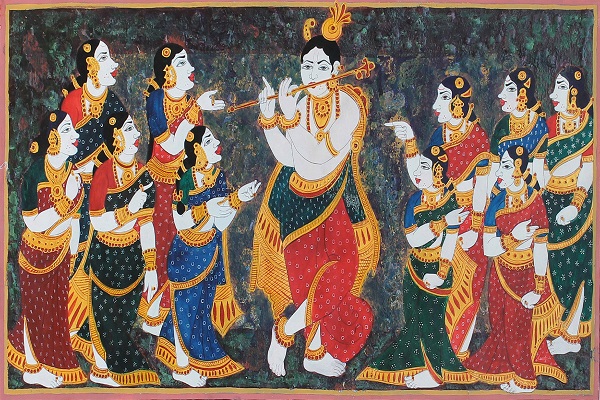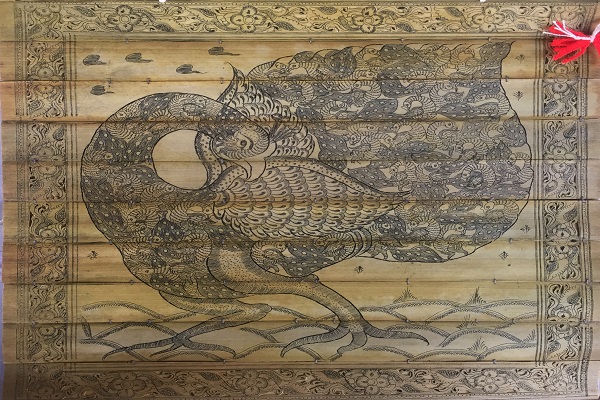
'Art is not what you see, but what you make others see.' These words of the renowned French artist Edgar Degas encapsulate the timeless essence of art and its ability to transcend generations. In today's digital era, where technology constantly redefines the boundaries of creativity, the resurgence of traditional paintings finds a powerful ally in the realm of online art galleries. As the art world undergoes a profound transformation, the intersection of tradition and innovation becomes increasingly pronounced. Understanding the dynamics behind this synergy not only unveils the evolving nature of artistic expression but also underscores the pivotal role that online art galleries play in shaping the contemporary art landscape.
The Revival of Traditional Paintings
For centuries, traditional paintings have served as a profound reflection of human culture and creativity. These age-old artworks, often created with meticulous detail and a deep connection to cultural narratives, have captured the essence of their eras. From the exquisite Renaissance masterpieces of Leonardo da Vinci to the vibrant canvases of Vincent van Gogh, traditional paintings have told stories, depicted emotions, and provided insight into the world's ever-evolving tapestry. These works of art aren't merely decorative; they are historical records, encapsulating the aesthetics, beliefs, and values of the past. Traditional paintings have celebrated life's beauty, delved into its complexities, and mirrored the aspirations of countless generations.
Challenges Faced Over Time
Although traditional paintings have undoubtedly made a lasting impact on the art world, they have encountered a set of challenges as time has progressed. In the backdrop of swift technological advancements and shifting artistic trends, the prominence of traditional painting as a medium started to diminish. The demanding nature of the art form, the scarcity of skilled practitioners, and the expense of materials posed formidable barriers. Furthermore, the traditional art world often struggled to connect with younger generations who were more inclined towards digital art forms. Museums and galleries exhibited these artworks, but the broader accessibility to traditional paintings diminished, limiting their reach.
Need for Revival
In a world that continuously evolves, there is a pressing need to breathe new life into traditional paintings. These invaluable pieces of art hold an intrinsic cultural and historical value that must not fade into oblivion. Revival transcends mere nostalgia; it's an act of preservation. When we rekindle our appreciation for the intricate tapestry of traditional art, we pay homage to the heritage of yesteryears and build a bridge to the future. The resurgence of traditional paintings is an essential cultural pursuit, as it guarantees that the deep narratives and artistic expressions they hold continue to stay pertinent and within reach for generations to come. Moreover, traditional art revival aligns with the desire to celebrate the intricate craftsmanship, unique aesthetics, and timeless stories that are part of our global heritage.
The revival of traditional paintings is a testament to the enduring allure of the past and the commitment to keeping its artistic treasures alive for generations to come. Online art galleries are playing a pivotal role in breathing new vitality into traditional paintings. This renaissance promises to be an exciting chapter in the ongoing story of art and culture.
Emergence of Online Art Galleries
Art has always been a powerful medium for human expression, capturing emotions, stories, and cultural heritage through various forms and techniques. Throughout history, art has evolved alongside advances in technology, and the 21st century has brought about a profound transformation with the emergence of online art galleries. This digital revolution has redefined how we create, appreciate, and collect art.
The Rise
The ascent of online art galleries marks a profound transformation in the realm of art. Though traditional brick-and-mortar galleries still maintain their unique charm, the digital sphere has generously extended its horizons to artists and art lovers alike. Online art galleries now serve as a virtual haven for artists, offering them a boundless stage to exhibit their creative works to a worldwide audience. This transition finds its roots in the collective aspiration to transcend the constraints imposed by physical spaces and geographical limitations.
Artists hailing from every corner of the world are now provided with a global platform to showcase their creative work. This platform enables them to engage with art enthusiasts, collectors, and fellow artists, transcending the limitations previously imposed by a local audience. This newfound accessibility has breathed fresh life into the art industry, enabling emerging talents to gain recognition and established artists to reach wider audiences.
The Role of Technology
Central to this transformation lies the pivotal role of technology. Online art galleries harness a range of cutting-edge innovations, such as high-resolution imaging, virtual reality, and augmented reality, to craft immersive and true-to-life experiences. Thanks to these tools, art enthusiasts can scrutinize artworks with remarkable precision, almost as though they were physically present in a traditional gallery setting.
Furthermore, technology has simplified the process of buying art. Secure online payment systems, authenticity verification, and worldwide shipping have made art transactions more convenient and secure. The use of blockchain technology to establish provenance and protect artists' rights has also gained prominence in online art sales.
Advantages
The advantages of online art galleries are manifold:
1.Accessibility
First and foremost, online art galleries offer accessibility on an unprecedented scale. Art enthusiasts no longer need to visit a gallery in person to experience art; they can browse through a diverse array of artwork from the comfort of their homes. This accessibility has democratized art appreciation, making it inclusive and available to a broader spectrum of society.
2.Global Recognition
For artists, online galleries have become a gateway to global recognition. The ability to exhibit and sell artwork online has eliminated the need for intermediaries, allowing artists to have more control over their careers. They can set their prices, manage their portfolios, and connect directly with collectors. This empowerment has paved the way for a new generation of artists to thrive in the digital age.
3.Interactive and Engaging Art Experience
The online platform encourages a more interactive and engaging art experience. Art enthusiasts can learn about the artist's inspiration, techniques, and the stories behind each piece. It enriches the connection between the creator and the audience, deepening the appreciation of art as a whole.
Online Art Gallery: Bridging Tradition and Modernity in the World of Art
Art has perpetually mirrored the spirit of its era, encapsulating the core of a culture and its progression. Within this vibrant domain, tradition and modernity frequently converge, giving rise to a captivating fusion of imagination and novelty. Online galleries act as a conduit, uniting the abundant legacy of traditional art with the perpetually evolving realm of contemporary artistic expression.
Connecting Traditional and Contemporary Art
The art world is a vast spectrum, with traditional and contemporary art residing at opposite ends. The world of traditional art, steeped in rich history and time-honored techniques, frequently stands in stark contrast to the avant-garde and experimental nature of contemporary art. Nevertheless, online art galleries are reshaping this division by establishing a platform where these two realms harmoniously intersect.
Online platforms empower artists to present their creations to a worldwide audience. Thus nurturing a conversation that surpasses the constraints of geography. Here, traditional artists gain a platform to exhibit their classical mastery, while contemporary artists continually push the limits of artistic innovation. This interaction between the traditional and the modern sparks creativity and innovation. Thus leading to new and exciting art forms that challenge the conventional definitions of both.
Adapting Traditional Styles to the Digital Era
The digital age has ushered in a multitude of tools and techniques that have fundamentally transformed the art landscape. Artists who were once limited to traditional mediums like physical canvases and brushes are now venturing into the boundless possibilities of the digital realm. They adapt their classical styles to digital platforms, creating a fusion of traditional aesthetics and cutting-edge technology.
For instance, artists might use digital brushes to recreate the texture and strokes of oil paintings on a digital canvas. This fusion allows for greater experimentation while preserving the charm of traditional art. Artists can also draw inspiration from classical works and incorporate them into modern digital compositions, creating a dynamic interplay between the old and the new.
Benefits for Artists
Traditional artists are finding new avenues of growth and recognition through online art galleries. This dynamic shift towards digital platforms has ushered in a wave of opportunities, offering a multitude of advantages for artists who wish to showcase their traditional artworks.
1.Exposure Beyond Boundaries
Traditional artists have long grappled with the challenge of reaching a global audience. The advent of online art galleries has revolutionized this aspect of their careers. These platforms act as virtual windows, allowing artists to display their work to a worldwide audience 24/7. Freed from the constraints of physical gallery locations, artists can establish connections with art lovers across the world. Thus breaking through the confines of geographical limitations.
These online galleries provide a space where artists can curate their portfolios, share their artistic journeys, and engage with a diverse community of art lovers. This unprecedented level of visibility exposes artists to a broader range of potential buyers, collectors, and critics. Thus nurturing a vibrant ecosystem that supports and celebrates traditional art forms.
2.Potential for Increased Sales and Recognition
Online art galleries not only enhance an artist's exposure but also have the potential to boost sales significantly. The accessibility and convenience offered by these platforms make it easier for art enthusiasts to discover, appreciate, and purchase traditional artwork. As a result, artists can tap into a wider customer base, increasing the likelihood of their pieces finding appreciative homes.
Furthermore, the digital art realm nurtures an atmosphere in which artists have the opportunity to establish and nurture their unique brands while also fostering a dedicated and steadfast following. Integration with social media platforms, the hosting of virtual events, and the availability of promotional tools empower artists to forge more intimate connections with their audience. It not only results in heightened sales figures but also serves to elevate the artist's profile. Thus expanding their recognition within both the art community and on a global scale.
Benefits for Art Enthusiasts
Art is a universal language that has the power to move, inspire, and evoke deep emotions. Traditional paintings have a timeless allure and online art galleries have emerged as a gateway to unlock this world of creativity and beauty for a broader audience.
1.Making Traditional Art Accessible
Online art galleries have democratized art in ways unimaginable just a few decades ago. They serve as a digital bridge connecting art enthusiasts to traditional works from around the world. Whether you're in a bustling metropolis or a remote village, these galleries provide unfettered access to a diverse range of traditional paintings.
The geographical constraints that often limit one's exposure to traditional art have been shattered. Now, you can explore and appreciate traditional paintings from different cultures and eras without leaving your home. This accessibility introduces you to a wider array of artistic styles, techniques, and stories.
2.Convenience of Online Art Exploration and Acquisition
One of the most significant advantages of online art galleries is the convenience they offer. Art enthusiasts no longer need to visit physical galleries or auctions, which can be time-consuming and logistically challenging. Instead, you can engage with art from the comfort of your own space on your schedule.
Online galleries provide an intuitive and user-friendly interface, allowing you to browse and explore artworks effortlessly. You can leisurely peruse an extensive collection, read about the artists, and even view high-quality images of the paintings. This convenience enables you to take your time in appreciating and understanding the art, fostering a more profound connection with the pieces that resonate with you.
Moreover, the process of acquiring art has been streamlined. Online galleries facilitate secure transactions and shipping, making it easier than ever to add traditional paintings to your collection. You can confidently make informed decisions and acquire art that speaks to your soul.
Challenges and Considerations
Art has perpetually served as a mirror of human ingenuity, culture, and the annals of our past. It acts as a conduit through which artists express themselves, narrate tales, and stir profound emotions. Nonetheless, in this era of digital evolution, the art landscape is experiencing a profound metamorphosis. Traditional artists are embracing the realm of online art galleries, a transition brimming with promise but not without its share of complexities and contemplations.
Addressing Potential Challenges
Moving from traditional art to online galleries can pose a daunting task for artists. Let's delve into some of the challenges they could potentially encounter:
1. Technological Proficiency
Numerous traditional artists might not have a strong familiarity with technology, and making the switch to digital platforms can seem daunting. The process of learning can indeed present a significant challenge. However, the reassuring aspect is that there are a plethora of online resources and tutorials at their disposal, offering valuable assistance in guiding artists through this digital terrain.
2. Visibility and Competition
Online galleries expose artists to a global audience, but they also introduce intense competition. Standing out in a sea of talent is a challenge. Artists need to build a unique brand and leverage social media and marketing strategies to gain recognition.
3. Pricing and Valuation
Determining the value of digital artworks can be tricky. Artists must consider factors like size, style, and demand, as well as the potential for digital reproductions. Collaborating with experts or appraisers can help in setting the right prices.
4. Monetization and Royalties
Online platforms may have complex monetization models. Artists need to understand how they'll be compensated for their work and what rights they retain. Clear agreements and contracts are crucial in this regard.
5. Art Authenticity
Digital art is prone to unauthorized copies and forgeries. To ensure authenticity, artists can consider digital signatures, blockchain technology, and certificates of authenticity. These measures provide provenance and protect against unauthorized reproductions.
6. Copyright Concerns
Artists need to be vigilant about their copyrights. Online galleries should have robust copyright protection mechanisms in place. Artists should also clearly define the terms of use, reproduction rights, and licensing agreements for their work.
7. Digital Preservation
Ensuring the longevity of digital artworks is crucial. Artists should store their work in multiple formats and locations, employ digital archiving solutions, and follow best practices for digital preservation to safeguard their creations for future generations.
Read More: A Palette of Emotions: Traditional Paintings That Move the Soul
Wrapping Up
The revival of traditional paintings through the emergence of online art galleries signifies a powerful amalgamation of heritage and innovation. This dynamic transition not only rejuvenates the timeless charm of traditional art but also fosters an inclusive artistic landscape that transcends geographical boundaries. As artists navigate the digital realm, they encounter multifaceted challenges ranging from technological adaptation to the preservation of art authenticity and copyright integrity. However, these challenges serve as stepping stones toward a more accessible and diverse art community where creativity thrives and cultural narratives endure.
Explore the mesmerizing range of traditional paintings at Indian Art Ideas. Our collection is a tribute to the rich tapestry of Indian art, where time-honored techniques and cultural narratives come to life on the canvas.
FAQs:
What challenges do artists face when transitioning to online galleries?
Artists transitioning to online galleries may encounter challenges such as adapting to digital technology, standing out in a competitive online space, setting fair prices for their work, and navigating complex monetization models.
How can I ensure the authenticity of traditional art in an online gallery?
To ensure authenticity, artists and online galleries can utilize digital signatures, blockchain technology, and certificates of authenticity. These measures provide provenance and protect against unauthorized reproductions.
How can online galleries preserve the cultural and historical value of traditional art?
Online galleries contribute to the preservation of traditional art by making it accessible to a global audience. This exposure ensures that the cultural and historical significance of traditional art remains relevant and cherished for generations to come.

























